Antarctica
TRAVEL TO ANTARCTICA - HOW, WHEN & WHY
An epic destination requires an epic amount of research – we've done all the hard work so all you have to do is read on and be totally inspired! If these are your first tentative steps into Antarctic expedition research, rest assured you've come to the right place. There's certainly a lot to know about travel to Antarctica so we thought we'd give you a concise How, When and Why guide to help you plan your once-in-a-lifetime trip to the White Continent.
Arguably the most important thing to keep in mind is that your options are extensive: there is an Antarctic experience for every budget, a host of startling destinations you ought to know about before choosing your trip, as well as seasonal differences that can make all the difference.
So let's get started, shall we?
TRAVEL TO ANTARCTICA - HOW
Expedition Cruises from South America
If you've ever heard anyone say that 'getting to Antarctica is half the fun', you can bet they were referring to expedition cruises departing from the Ushuaia, at the southern tip of South America.
This is the most popular springboard for Antarctic expeditions where you'll find the widest array of ships and with the most comprehensive price & luxury-level options. Cruises departing Ushuaia must cross the Drake Passage, the legendary 'roughest sea on earth' although its unpredictability means one never really knows if one will experience a Drake Lake or Drake Shake. Cruises from Ushuaia can last anywhere between 10 and 21 days depending on itinerary, the longer ones offering extra stop-overs to amazing destinations that are really worth visiting, like the South Shetlands Islands and South Georgia, the reputed 'wildlife haven' of the sub-Antarctic region and home to its largest King Penguin colony.
Flight & Cruise Options from South America
For those who are hesitant to tackle the Drake (it is great fun but not if you suffer terribly from seasickness) there is the option to fly right over the sea passage from Patagonia to the South Shetlands, from where you can join an expedition cruise to the Antarctic Peninsula.
We consider the crossing of the Drake to be a pivotal part of the whole Antarctic experience – it grants you a couple of days to slowly (but surely) disconnect from the rest of the world. Yet if hesitation about it is the only thing that stands in your way then this is certainly the best option.
Better Antarctica this way than no way at all.
Expedition Cruises from Australia & New Zealand
Our neck of the woods offers what is considered the most exclusive and unique Antarctica travel option of all. Cruises from Australia (Hobart) and New Zealand (Bluff) take twice as long to reach the eastern shores of Antarctica, offering exceptional voyages to a less-er-visited region of the peninsula.
Eastern Antarctica is the land of the giant icebergs, the more remote and historic landing sites and of-fers the unrivalled chance to cross the Ross Sea, widely regarded as the Last Pristine Marine Ecosystem on Earth. Only a few expeditions set sail from Australasia each summer and they are among the most coveted experiences of all.
To find more 'out there' ways to travel to Antarctica, including chartering a private yacht and finding work on a research station, read our Antarctica How-to Travel Guide.
Travelling from South America
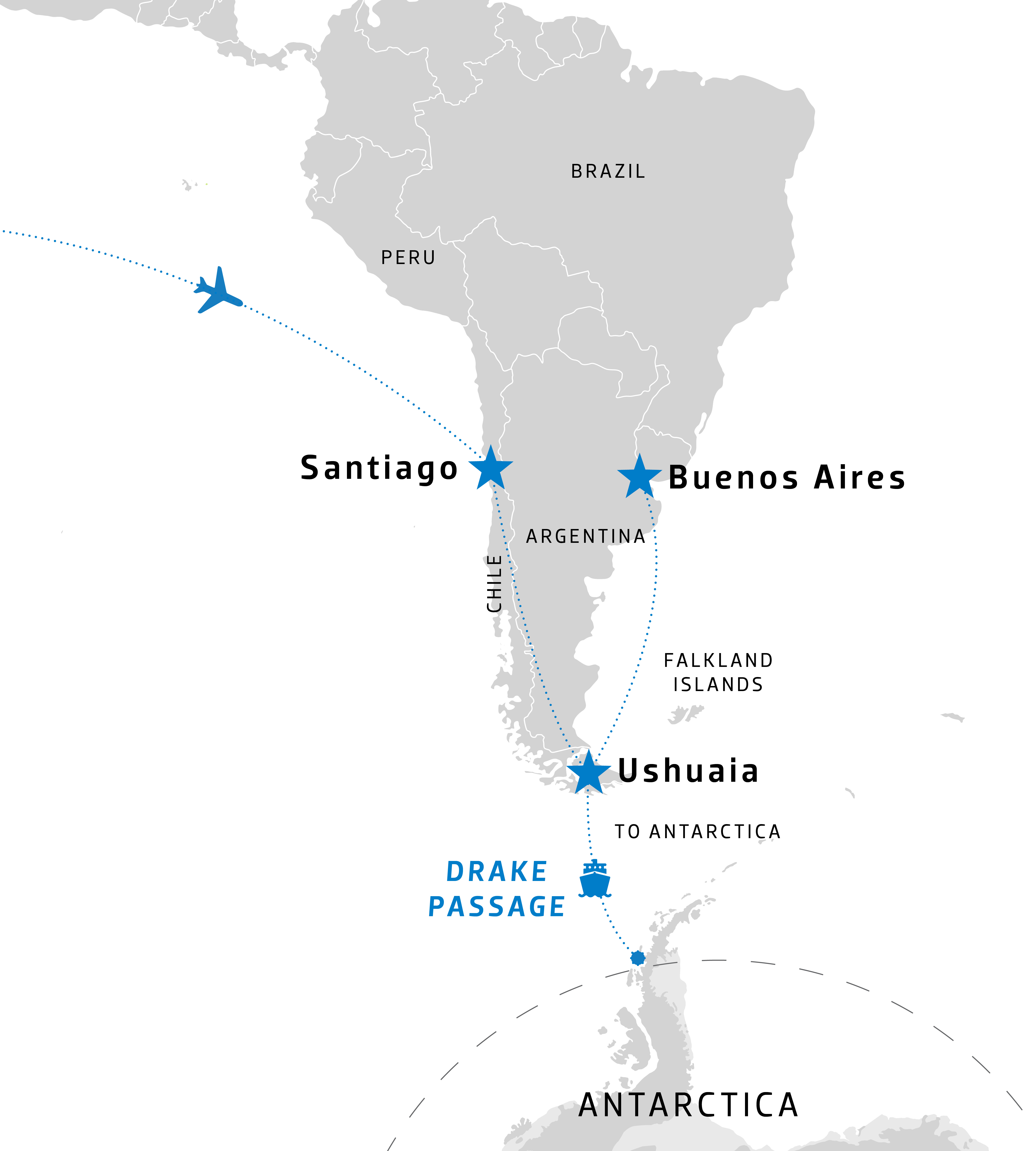
Travelling from Australia & New Zealand

TRAVEL TO ANTARCTICA - WHEN
The Antarctic cruising season runs only during the southern summer, in the period between October and March. The season may seem short but it's actually quite varied with each month offering unique wildlife and wilderness experiences. Early visitors will be privy to gorgeous penguin courtship rituals whilst late-season visitors will see rookeries chock-full of waddling babies. A few weeks can make a huge difference in Antarctica so be sure to know what you should be expecting depending on the month of year you visit.
Read our Month-By-Month Guide to Antarctic Highlights to learn more about what each month in Antarctica offers or click on the month's below for a quick overview.
TRAVEL TO ANTARCTICA - WHY
Antarctica seems to be the hottest word on everyone's lips nowadays: those who've never been are making concrete plans to visit and those who have are planning their return trip.
So what's the appeal? For starters, there are very few places left in the world that feel so utterly unconquered – and Antarctica leads the pack. This is a wilderness beast no man has ever truly explored – only in the last few weeks has an explorer (two in fact) managed a traverse of what is, essentially, just a small portion of it.
The remoteness, isolation and pristine conditions of Antarctica are an incredible enticement not just for nature lovers but for anyone who wants, just for once in their life, disconnect from the modern hectic world they inhabit. Antarctica is deafeningly quiet: there's no artificial noise pollution here, it is unnerving and ethereal to be somewhere for weeks on end and see no cars, no roads, no man-made anything. Yet at the same time, the wildlife, the calving ice and the sea provide a constant source of musical companionship. Penguin rookeries are among the loudest places on earth – yet it's a noise one isn't used to and it boggles the mind. The juxtaposition of nature VS lack of human habitation offers a truly unforgettable sensaory overload.
If that's not enough, Antarctica is also considered one of the most endangered places on earth so there's a sense of urgency nowadays to visit before it all melts away. We're still a long way off that happening but anything that raises awareness of climate change and environmental protection is good for the planet overall. Antarctic expeditions are not just immersive and spellbinding but they're also educational, each one offering a host of lectures and presentations which teach guests about the immediate environment and the impact global warming is having on the landscapes and wildlife. You may think that visiting Antarctica is counterproductive to its protection yet if there's one thing all scientists agree upon is that the tourism industry here has had beneficial effects. This is the one continent on earth with no permanent or indigenous population to fight for its survival – visitors become ambassadors for the cause and the increase in demand for Antarctica expeditions has meant an impressive increase in the awareness of its fragility.And if that's not reason enough to go, well, here's a couple of Macaronis you should definitely come see.
We host one of the most comprehensive online Antarctica Resource Centre with an extensive array of travel guides to help you plan the trip of your life. You'll find info on the kind of expedition ships we represent, itineraries, optional activities, history, wildlife, news, planning advice and plenty of personal travel stories as well.
We love Antarctica and we think you will too.
Contact us here to know more.
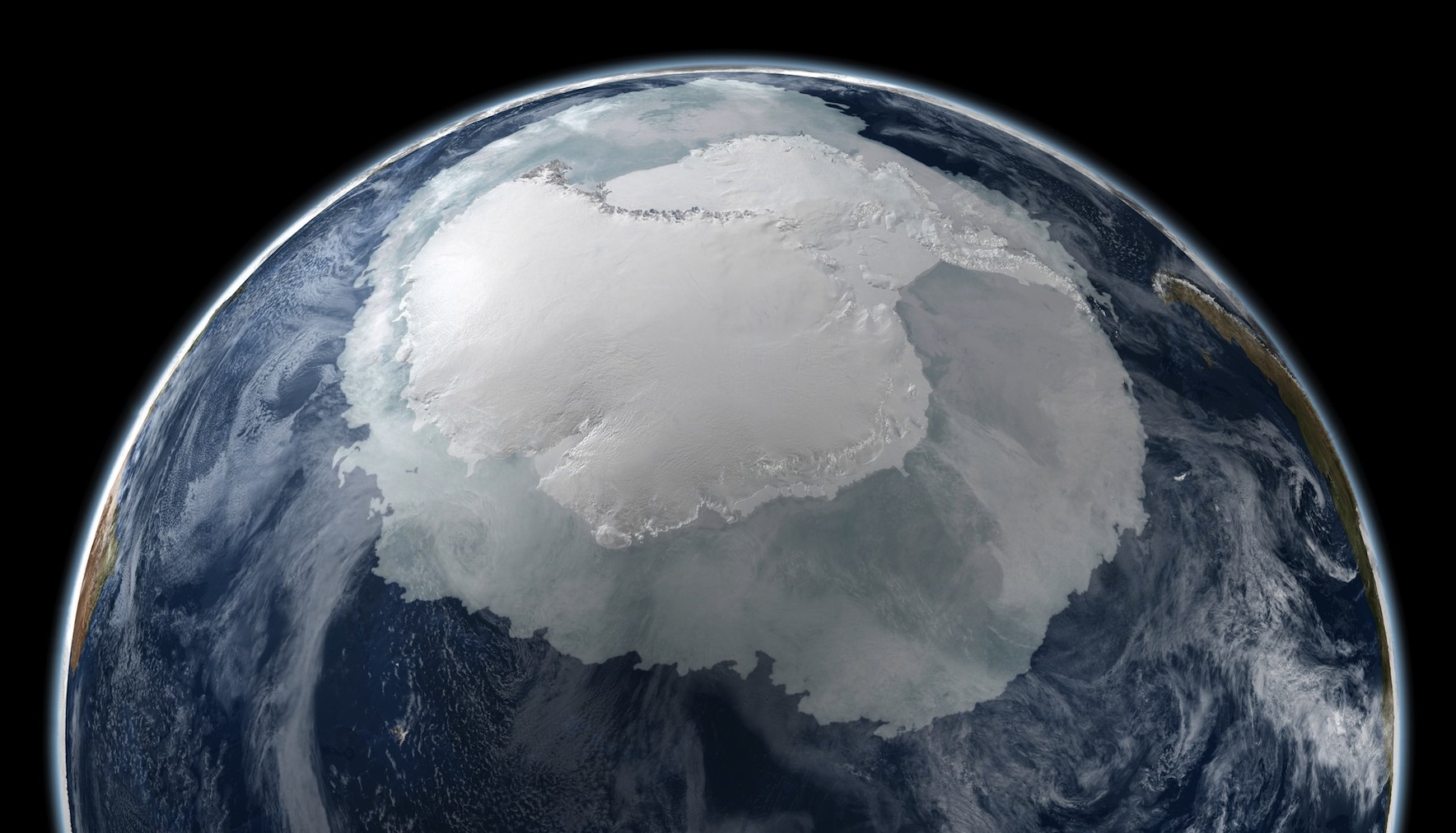
CHOOSING THE RIGHT SHIP FOR YOUR ANTARCTICA EXPEDITION
The fleet of expedition ships that are suitable for cruising to Antarctica doesn't seem all that extensive. That is, unless you're trying to choose one. Overwhelmed much?
Choosing the right ship for your Antarctica expedition becomes infinitely easier once you can identify your main priority, the one 'must' that will determine everything else. Once you have your personal list sorted, you can scour the collection of ships on our page by your main priority. If you've never undertaken a major expedition by cruise ship before, you may not be aware that size plays a huge role in your overall experience and that's why it's voted the #1 priority for so many returning guests.
By popularity, the five main deciding factors are the following:
Ship size determines many aspects of an expedition in Antarctica such as where you can go and how much time you get to spend on-shore, if you're even allowed to land at all. Ships in Antarctica may come in all shapes and sizes, however, only ones carrying less than 500 guests are allowed to make landfall. This is a huge deal: imagine getting down there, seeing all those penguins…and not be able to get off the ship?!
Moreover, protection laws on some landing sites dictate that only 100 guests can disembark at any given time, which means if you're on a ship with a headcount that's above that, you will need to take turns, drastically reducing your personal excursion time. Given that on-shore time is rated the very best thing to do on Antarctica expedition cruises, it becomes clear why ship size is just so crucial to your choice.
Given all of this, it becomes quite obvious that ship size also determines expedition costs. Ships of less than 100 guests are exclusive, they offer much greater personalised service and, because the expense of the expedition is shared by far fewer people, the costs are higher than on a larger ship. Take a look at our Antarctica ship comparison charts to learn more.
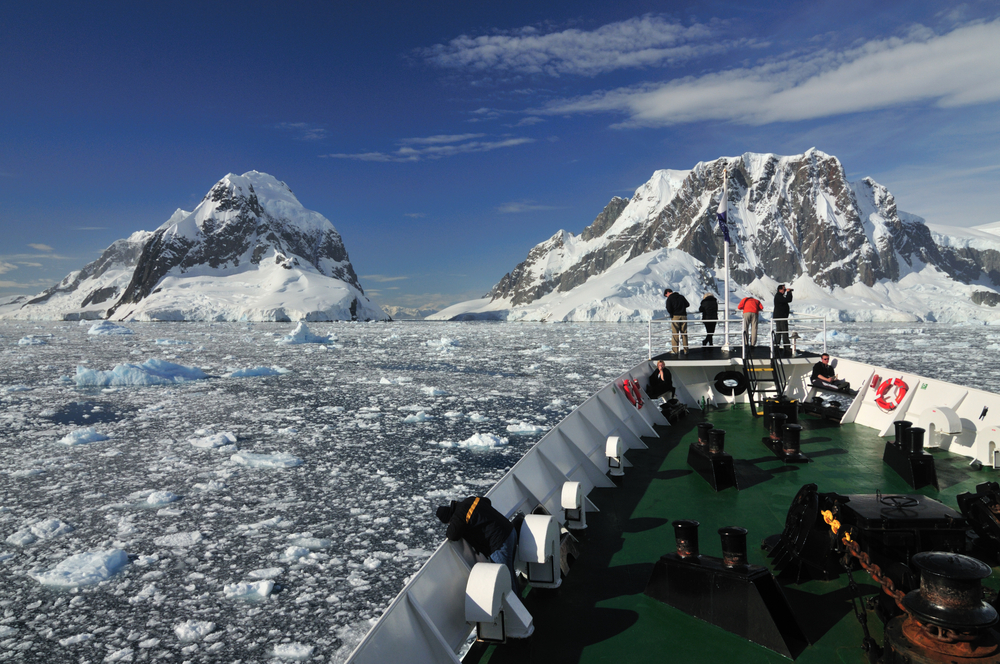
If luxurious comfort is at the top of your personal list, then you'd be happy to know that you won't always pay more for greater comfort. The bigger the ship, the more indulgent luxuries yet, with the increase in size comes a drop in price. Larger expedition ships don't just offer great value for money but they are also able to handle rough seas better than smaller ships and they are often chosen for this precise reason. If you suffer seasickness or are hesitant because you fear you may, then know that a larger ship does offer a much smoother cruising experience. Larger ships also offer bigger cabins, larger viewing decks and many more amenities, such as lounge bars, theatre rooms, boutique, heated salt pools, saunas, gym, wellness centres and even yoga classes. What's more, larger expedition ships usually wave the single supplement that's necessarily charged on smaller ships, so they're absolutely brilliant for sole travellers.
There are also a few high-end ships that tickle the fancy of those who want to go to the ends of the world, in as much luxury as possible. Dreamy vessels the Le Lyrial and Le Boreal are simply exquisite and although you will sacrifice some on-shore time, trust that you'll find plenty of delicious things to do on-board whilst you wait for your turn with the penguins. See our range of Luxury Antarctica Cruises.


Many expectant guests from Australia are surprised to learn that Antarctica expedition cruises can cost as little as AUD 7000. Expeditions to the south aren't nearly as prohibitively expensive as many believe although to get a clearer idea of the total cost, you'd need to include flights to the point of departure.
The most popular casting-off point for Antarctica is South America, specifically the southernmost city in the world, Ushuaia. Here you'll find the cheapest expeditions because here are the greatest number of ships during the summer. If you're planning on taking a longer vacation abroad and wish to include a journey to South America, this is really an ideal add-on. The Austral summer isn't just perfect for Antarctica but also for hiking and wildlife-watching tours of Patagonia. A win-win if ever there was one!
The cost of your Antarctica is arguably the greatest determiner of trip duration. A good way to spend less but enjoy the brilliance of a smaller ship, is to simply choose a shorter itinerary.
On the other hand of the scale is where you'll find longer expeditions that depart from Australia (Hobart) and New Zealand (Invercargill) which may cost considerably more but also deliver a superb expedition experience. Head to Antarctica from your own backyard and you'll cross the magnificent marine-life enriched Ross Sea, enjoy more days cruising the high seas, see much bigger icebergs and, overall, have a much wilder and more adventurous journey. These odysseys cost considerably more, usually in the range of AUD 35,000 to AUD 45,000 per person but they should be considered unique odysseys that are unrivalled, anywhere in the world.
Find more details on Visiting Antarctica from Australia.
See our exclusive selection of Antarctica Expeditions departing Australia/New Zealand.
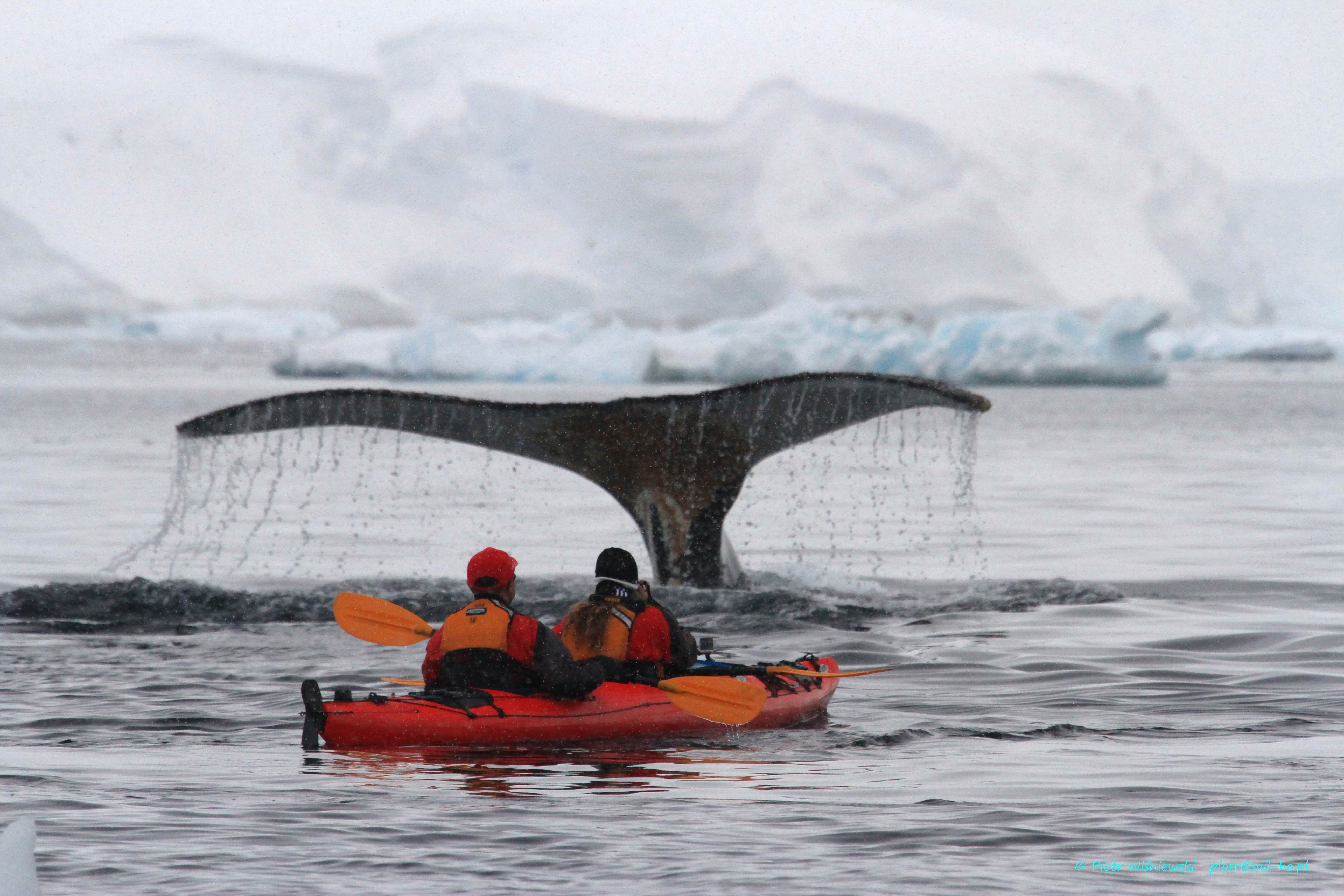
Antarctica isn't just one destination but a startling world home to an incredible array of highlights. Expedition cruises which depart South America include several amazing stop-overs and, for some, there are absolutely non-negotiable inclusions. Cast off from Ushuaia and you can choose an expedition that visits the Falkland Islands, as well as the Antarctic wildlife haven that is South Georgia, or, for the ultimate adventure, choose an itinerary that takes you further south, across the magical Antarctic Circle. If one (or all!) of these included highlights are on your list of musts then it becomes a lot easier to choose the right ship for your Antarctic expedition and, if you're lucky, you'll also find the ship size, comfort level, price and departure point that's just perfect for you.
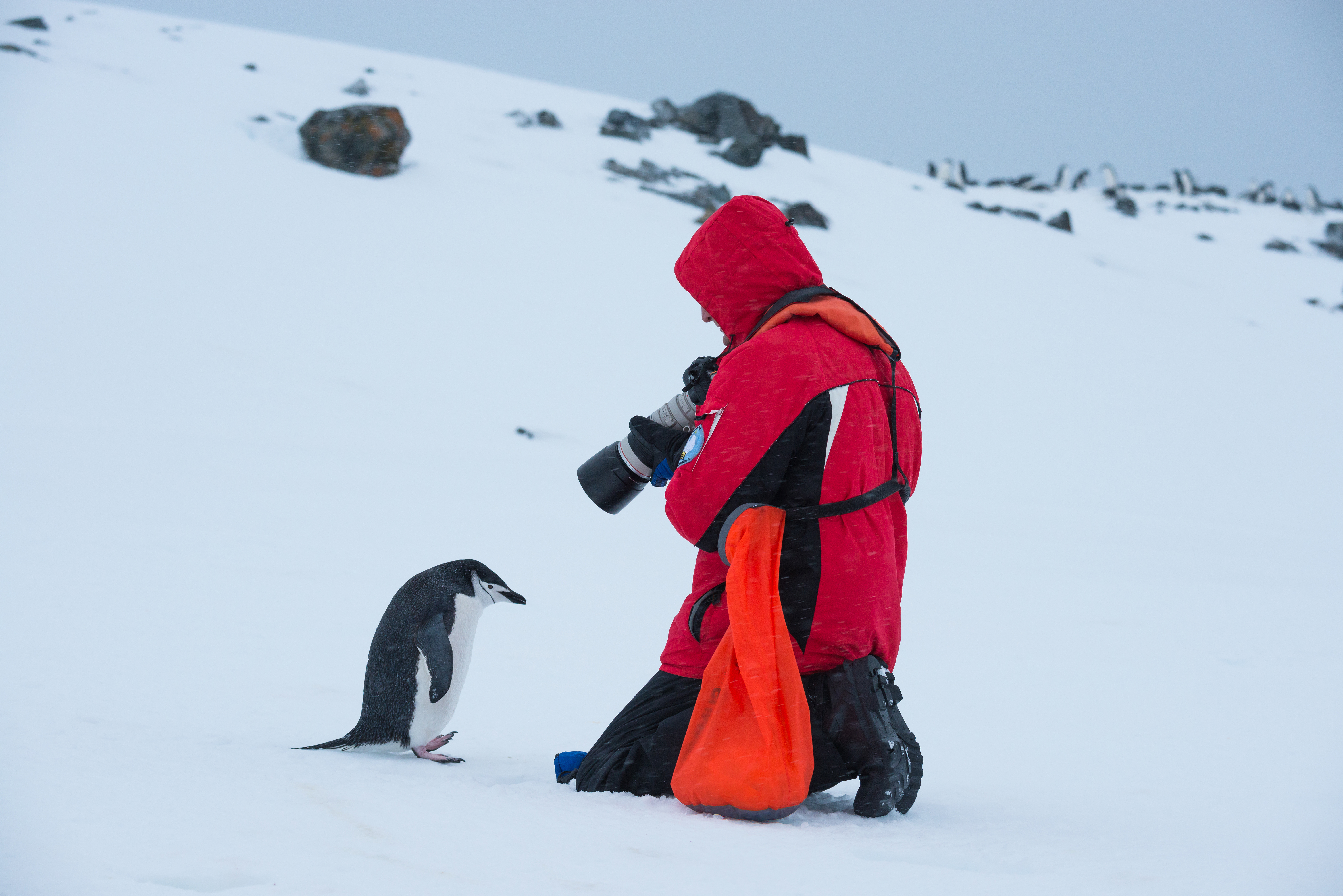

You may not yet know where you want to go in Antarctica and how much you can budget for your trip but you probably will know how much time you have to travel. This is as good a place to start as any other. When it comes to Antarctic expeditions, these are your options for trip duration
10/11 Days
The 'classic' Antarctic expeditions delivers the main highlights, including a crossing of the Drake Passage and visits to the South Shetland Island, Paradise Bay, Neko Harbour and cruising along the Lemaire Channel, spotting penguins in their rookeries and (usually) including a fascinating visit to a scientific research station.
14 Days – Add just a few more days and, aside from the above-mentioned highlights, you could be cruising further south and crossing the Antarctic Circle. A few extra days in Antarctica may not seem like much yet these tours do offer a more immersive experience and gift you a major bucket-list experience.
21 days
Head to Antarctica for three weeks and the wildlife-watching value increases tenfold. On 21-day Antarctic expeditions, you'll head south across the Drake, northeast around the Shetlands and further east to visit South Georgia (the wildlife crèche of the region!) with a stop-over on the Falkland Islands on your way back. A sensational round-trip that never backtracks and one that delivers a more comprehensive Antarctic experience than perhaps any other. This is the trip with all the trimmings!
23 days
For eastern Antarctica voyages from Australia and New Zealand you'll need to set aside a few more days, with the longer journey to the White Continent offering many more days at sea. As mentioned above, these incredible adventures offer very unique Antarctic experiences and take you to a side of the world not many people ever get to visit. You'll still have plenty of time to visit Antarctic islands on the way and can cast your eyes on the magnificent Ross Ice Shelf, taking helicopter rides to McMurdo Station and Scott's Discovery Hut. These voyages truly are a once-in-a-lifetime Antarctica experience.
Choose your voyage by duration on our Antarctica page.
Our team at Chimu Adventures has extensive Antarctica expedition experience and we'd love to help you choose the right ship for your upcoming dream-trip to our far south. We've sailed on small ships, large ships and luxury ships, we've taken the Polar plunge (a-ha!) and visited all those stunning Antarctic islands everyone raves about. Wish for some personalised advice? You'll find us right here.
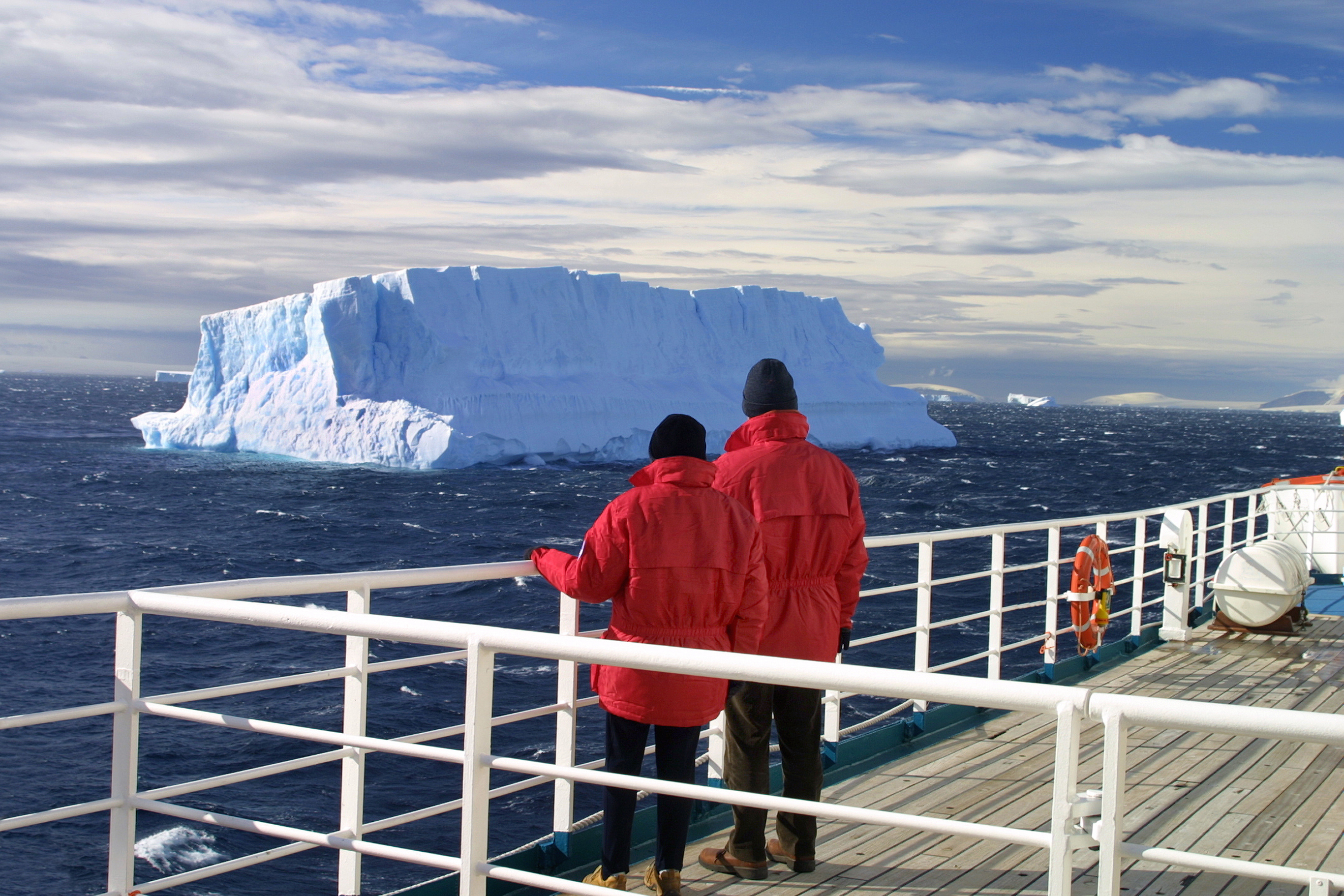
THE MAGICAL WILDLIFE & LANDSCAPES OF ANTARCTICA
Pristine and endlessly captivating – the wildlife and landscapes of Antarctica hold irresistible appeal. The magical wildlife and ethereal landscapes of Antarctica are undoubtedly the prime reason this frozen wonderland has swiftly become the #1 travel destination on earth. A photographer's dream and priceless natural treasure, Antarctica is like no other place on earth and offers an incredible sensory overload that's hard to put into words.
At first glance, it may seem like Antarctica is insanely inhospitable – after all, the yearly expedition cruising window is rather short – yet you'll be astonished by the amount of wildlife one finds here, happily waddling and frolicking in frigid waters and frozen lands And as if those magnificent Antarctic creatures aren't enough to blow you away, there's the otherworldly landscapes. Above all else, it's the landscape in Antarctica that make you feel as if you're not even on the same planet as the one from which you departed.
THE WILDLIFE OF ANTARCTICA
You may feel remote and isolated on an Antarctic expedition cruise, but you sure won't feel lonely. Aside from your equally enchanted expedition mates and ship crew, you'll find plenty of incredible wildlife companions here. The most coveted are the curious Emperor penguins and Southern Elephant seals, of course, but the most awe-inspiring would have to be the whales.
Humpback Whales
Humpbacks are the real show-stoppers on Antarctica expeditions. They're curious and active and put on a bit of a show, escorting Zodiacs ashore and breaching as if wilfully performing for the cameras. The amazing antics of the Humpback and its impressive size are the main reasons they're the prime objective of most whale-watching trips the world over. They're an absolute delight to see and this far south, among a sea filled with enormous icebergs, a close encounter with a Humpback makes you feel as if you're living a National Geographic documentary. Antarctica boasts many known Humpback feeding channels, special places where they gather in large groups, so your chances of seeing them are high.
Minke Whales
Minkes are just over half the size of Humpbacks (about 8m in length) and their smaller size means they can easily leap out of the water completely when feeding. Likewise curious, Minke whales are known for approaching ships and Zodiacs to take a closer look and given their healthy numbers in Antarctica in the summer, they're one of the most common whales to be spotted.
Sperm Whales
Males Sperm whales make their migration to the freezing waters of Antarctica each summer, where they dive to impressive depths – the deepest of all whales – to feed on giant squid. They're solitary creatures and, given their propensity for long dives, are an elusive animal to spot but a sighting is certainly not uncommon.
Blue Whales
The largest creature to have ever lived on our planet, in one of its most mesmerizing destinations: spotting a Blue Whale in Antarctica is a once-in-a-lifetime experience. The chances of spotting the giants of our seas are not exceptional considering this is one of the most endangered beasts on earth, but if the gods shine on your expedition, it'll no-doubt be the most unforgettable highlight of all.
Killer Whales
Their name is a misnomer – the Orca is actually a dolphin – a beautiful black and white dolphin renowned for its aggressive seal-hunting techniques. These guys are not only ferocious hunters but they're immensely intelligent, organised and cunning – they hunt in packs and seem to follow pre-planned strikes on their prey. If you're going to see an Orca in Antarctica, it'll be around pack-ice where seals love to sunbathe, and if you happen to catch the spectacle of a feeding duel, it'll be a wildlife experience you'll never forget.
Southern Right Whales
The seemingly innocuous name of this gorgeous creature is actually a nod to the prolific whaling history that nearly wiped most of them out. Given their slow speed, gigantic size and propensity to steer close to shore, the Southern was always considered the 'right' whale to hunt. Found in the southern oceans of our planet and loving its yearly vacay in Antarctica, the Southern Right Whale can grow up to 15m in length and weight over 60 tons.
The amazing thing about whale-watching in Antarctica is that the spectacle often starts long before you get anywhere near the peninsula. The legendary Drake Passage, which you must cross in order to reach Antarctica from South America, is a known feeding and migrating ground for whales and there's nothing more awe-inspiring than spotting whales out in the open seas. Your chances of spotting whales on an Antarctic expedition are high but they're even higher if you book a late-summer cruise. The prime whale-watching season in Antarctica runs from February to mid-March so if you can brave slightly colder temps, you'll bag the highest chances for exceptional whale sightings.
Emperor & King Penguins
The two largest penguin species consistently rate as the main wildlife-watching objective for Antarctica cruise guests, because even though you can spot whales in other parts of the world, you must head south on an Antarctic expedition to catch these guys in their full glory. Revered for its stealth at sea and crazy resilience, the Emperor chooses to breed during the harshest season of the year, in the harshest place in the world. Breeding in the darkest heart of the Antarctic winter allows those fluffy chicks to be born at the right time of year – Spring – and have the whole summer season to feed and grow before tackling their first winter on the ice. They are an elusive animal to spot because they prefer more remote icy-lands in Antarctica and are only very seldom spotted near the coast. The King, on the other hand, prefers slightly warmer waters a little further north and is mostly seen in sub-Antarctic islands and not on the peninsula. For these reasons and particularly if the largest penguins on earth are at the top of your must-see list, we strongly recommend you choose an expedition which includes a stop on South Georgia. Not all cruises head here first before continuing on to the Antarctic Peninsula – as these longer expeditions are more expensive – but if you can manage, a visit here will bring you face to face with one of the largest King Penguin colony on earth. And isn't that worth a little detour?
Discover Chimu's co-founder's 10 Reasons To Visit South Georgia
Southern Elephant Seals
The largest seal in the world is known as a grumpy beast, seemingly as aggressive as he is humongous. The in-built trumpet is where this species' name derives and, although indeed aggressive when bothered, it's actually a glorious animal to photograph. Mostly, because it's just so curious-looking. Often spotted basking in the sun along island's shores, southern elephant seals inhabit sub-Antarctic islands and are most often seen in the South Shetland archipelago. They gather in large colonies and are only one of six seal species found thriving in these nutrient-rich Antarctic waters in summer.
Chinstrap, Gentoo & Adélie Penguins
ThIs wonderful trio of penguins may be much smaller than their imperial counterparts yet are among the cutest you'll meet on your expedition to Antarctica. They're immensely curious, having not a care in the world as they waddle up to humans, sussing out shoes, backpacks, cameras and anything else that's left lying around. The Chinstrap, Gentoo and Adélie may be the most common penguin species you'll see here but only make up only a fraction of all the penguin species in Antarctica.
Birdlife – Every Austral summer, over 40 species of birds, numbering over 100 million, make the yearly pilgrimage to feed off Antarctica's rich waters. Expeditions to this glorious continent are as much bird-watching journeys as anything else. Here, you'll see the Waved Albatross and the Snow Petrel, as well as Skuas, Egrets, Gulls, Cormorants. Herons and a host of other flying hunters. They scour the coast for left-overs and dive the frigid waters in search for fish – they're numerous, loud and an absolute pleasure to spot. Even if you're not an avid bird-watcher, you'll undoubtedly be impressed here, at the very least by the Waved Albatross who boasts the largest wingspan of any bird on earth and to see one in flight is absolutely spectacular. The Waved Albatross breeds in the Galapagos and flies out in summer – a truly impressive journey by anyone's standards.
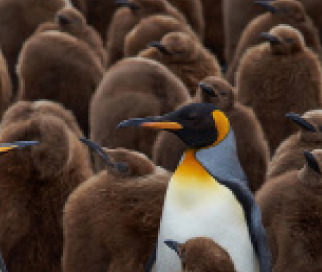
King Penguin
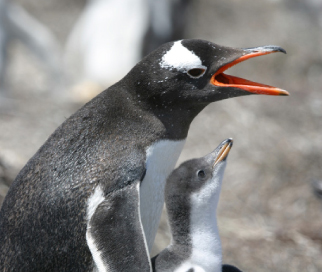
Gentoo Penguin
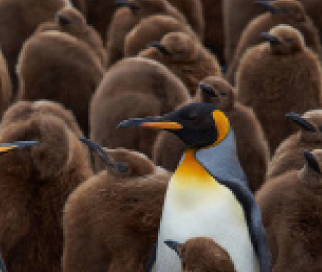
King Penguin

Elephant Seal
THE LANDSCAPES OF ANTARCTICA
Wildlife encounters will certainly be a huge highlight on your trip to Antarctica but one of the biggest surprises for many is realizing just how mesmerizing the landscape is, animals notwithstanding. Unlike popular belief, Antarctica isn't just about ice. But when it is, it's utterly mesmerizing.
Icebergs constantly remind you of where you are – they seem to have a life of their own (because they do) floating, flipping and moving– some slowly, some fast, all of them captivating your attention for hours on end. Icebergs dot the landscape of Antarctica,
they decorate like shiny gems on a pearl necklace, a treasured jewel that is magnificent as a whole and fascinating in detail.But icebergs are just the start here.
Head to Antarctica and you'll see snow-covered mountains and expansive pebble beaches, you'll discover flora in the most unthinkable of places and be overwhelmed by the variety of scenery. The most amazing thing, in fact, is just how quickly the scenery change, the colours, the features and the horizons. Most amazing still is that Antarctica actually looks different depending on the month you visit. This is why so many people head here on multiple expeditions during their life – early season to see the largest icebergs and the most pristine and unspoiled landing sights still covered in snow. Mid-season to bask in 24 hours of daylight and late-season too, for those glorious sunsets that drown the world in a red glow.
There isn't a single aspect of Antarctica that isn't breath-taking and if you're craving a life-changing, nature-infused experience, there's simply no other place in the world to visit.
Scour our Antarctica Archives for more fascinating facts on this magnificent destination and come see what exciting Antarctica Expeditions we have in store for the next cruising season.
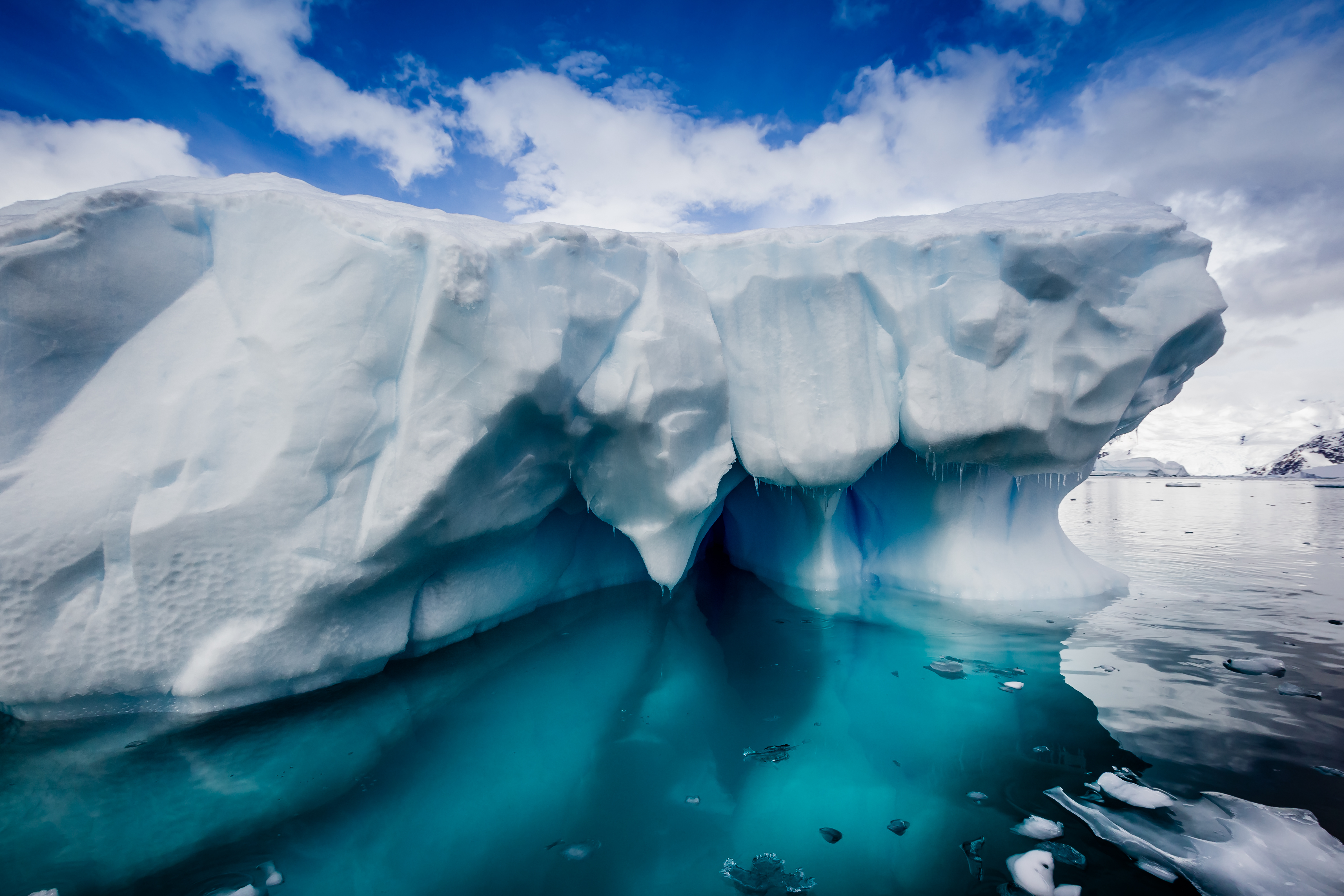
PACKING FOR ANTARCTICA – HOW TO GET IT RIGHT
How to pack for an expedition to the ends of our world? With our guide, of course!
Sure, you may be heading off on an expedition cruise to Antarctica in the heart of summer, but if you think you should be packing for a balmy climate you may be (un)pleasantly surprised. The southernmost continent on our planet is a harsh and often inhospitable place, one of magnificent beauty and absolutely brutal temps. Yes, even in the heart of summer. Some say one should pack for Antarctica with military precision and although that's probably a bit exaggerated it does pay to get it right. Not like you can duck down to the local 7-11 to get that thingamajig you forgot to bring.
In this, your ultimate guide to packing for Antarctica, you'll learn all about what you absolutely must pack, what you can rent locally before joining your trip and a few items of comfort you may not have yet considered. All of this will hopefully help you have the most enjoyable and rewarding journey imaginable. Pack well and you'll have Antarctica in your back pocket.
Well, almost.
On that note, it’s important to point out that while temps in Antarctica will be low, it may not actually be as cold as you imagine. It’s all very relative to what you’re accustomed to: if you hail from central or northern Europe – or Tasmania – you may just wonder what the fuss is all about. Most days you’ll experience days above freezing (up to 15 C!) and, unless a harsh wind picks up, you may just be tempted to strip down to your T-shirt if you’re in a sheltered spot and blistered by the summer sun.
EXPEDITION RENTAL GEAR IN USHUAIA
Ushuaia actually caters well to expedition guests and there’s a lot of gear which you’ll need that can be rented here for the duration of your trip. If you’re really not geared-up yet and you think you may not have a need for this kind of gear aside from your trip to Antarctica, just ask us about rentals possibilities. You can probably cut your packing in half by renting what is needed before departing, which is particularly convenient if you’re travelling elsewhere either before or after your cruise.
We’re always more than happy to give you personalised advice on packing for your Antarctica expedition or any other aspect of your upcoming adventure to this most magical of places.
Feel free to contact us here to know more.